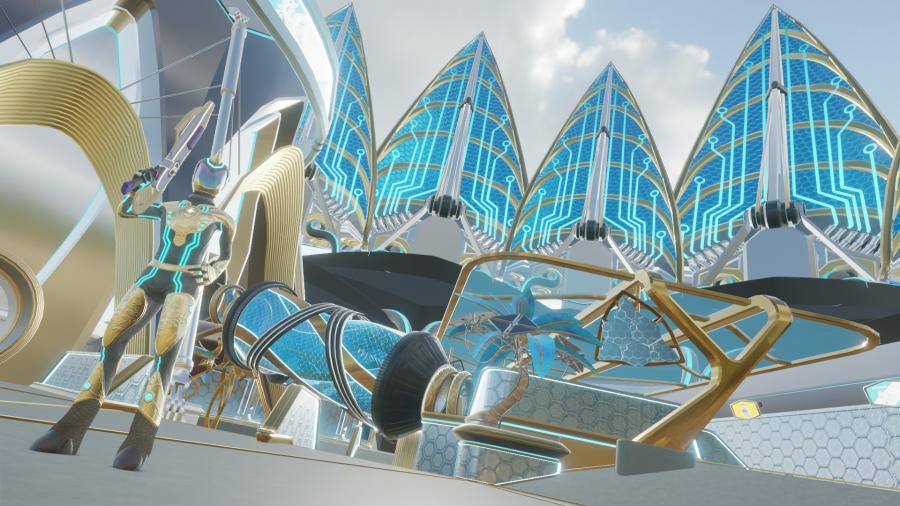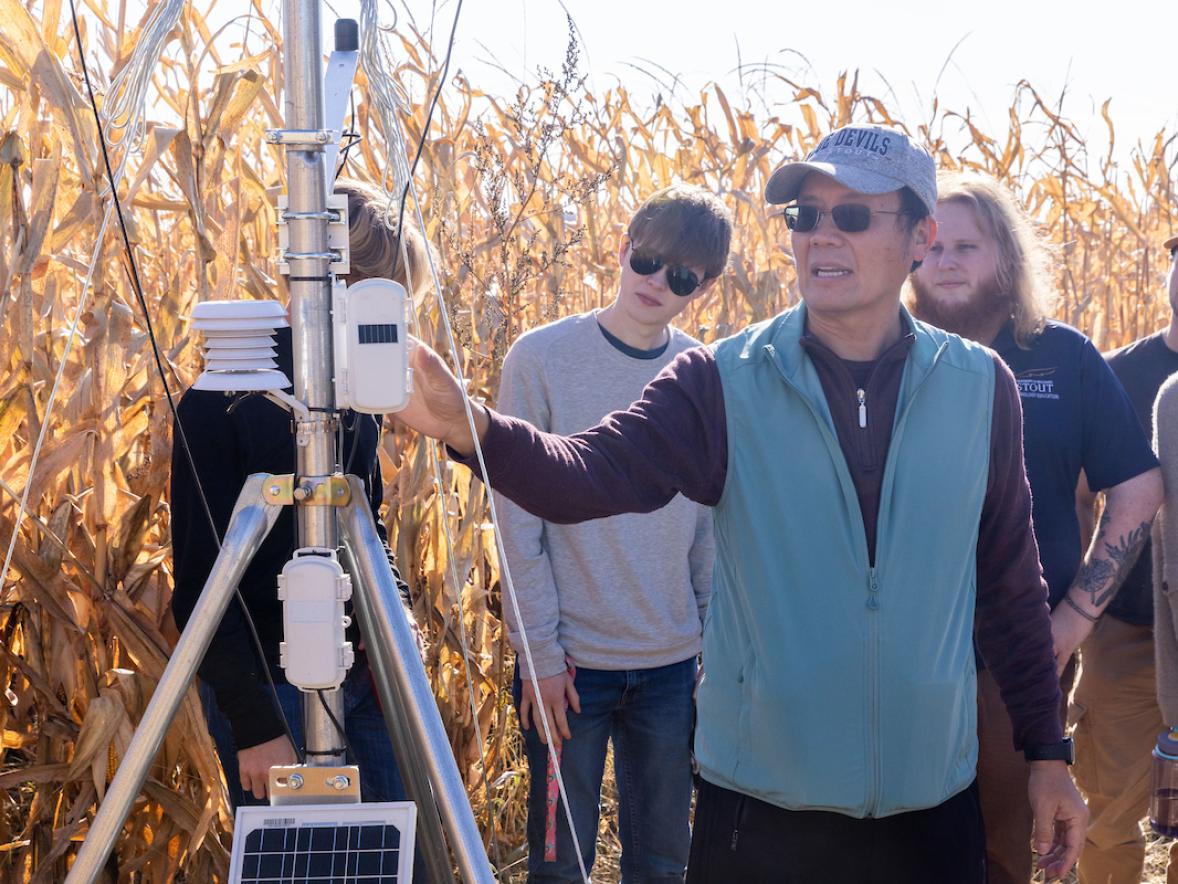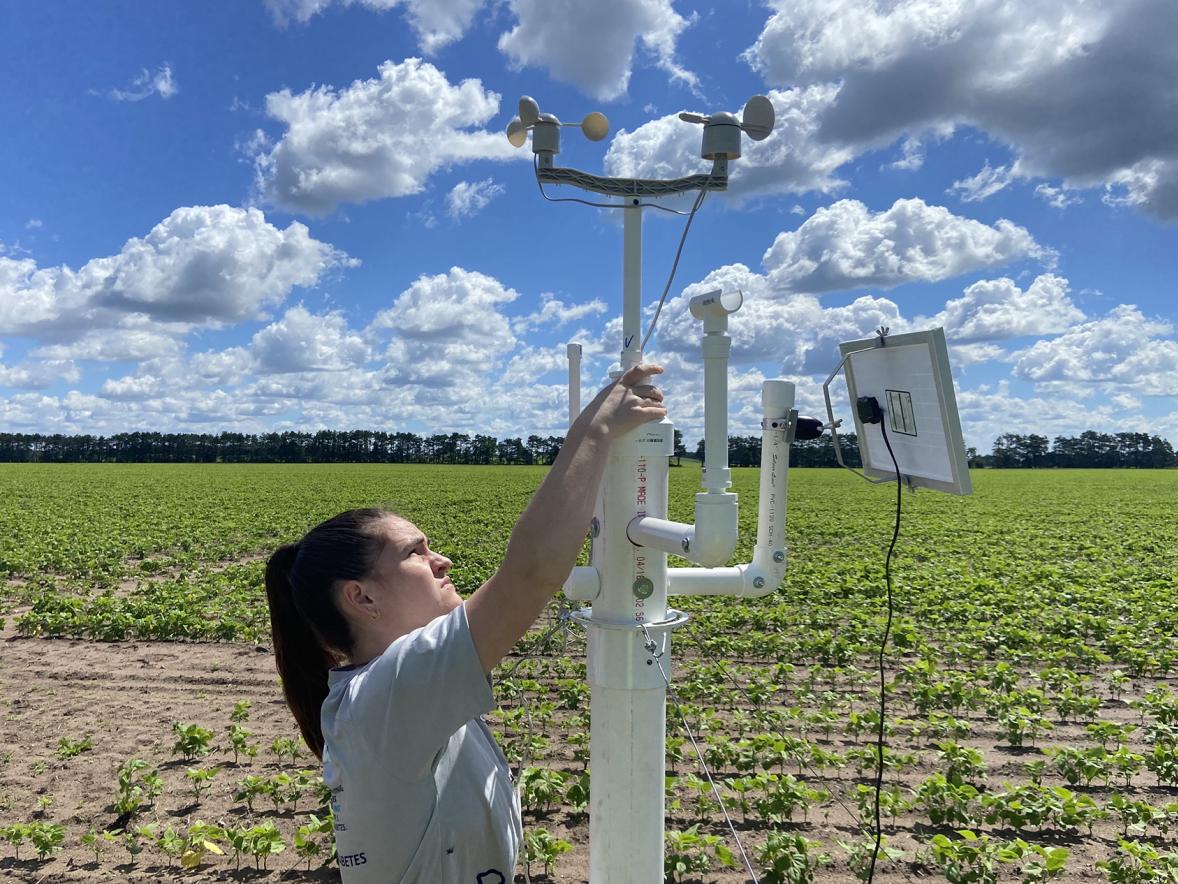Game and art enthusiasts will be able to enjoy two popular University of Wisconsin-Stout events virtually this year.
Stout Game Expo 2021 will feature more than 60 game experiences, premiering at 6 p.m. on Wednesday, May 5. SGX will have 3D and 2D video games, tabletop and card games available to play and download.
The Stout Senior Show will feature projects from students majoring in entertainment design, industrial design, interior design, graphic design, game design and studio art. The show premieres at 6 p.m. on Friday, May 7.
Both shows will remain available to the public through the summer. Links to the shows are available on the School of Art and Design Senior Senior Show website.
One of the senior projects in SGX 2021 is a puzzle game titled Vessel created by a 12-member team of students calling themselves the Curators. It incorporates 37 3D models of real artifacts and artworks from the Minneapolis Institute of Art.
Some of the artifacts and artwork players can find and learn about in Vessel are Noh Mask, Head of Budda, Fangding Food Vessel and Colima Dog

“The goal of the game is to showcase the Institute of Art artifacts while providing an entertaining game experience,” said Emily Shaffer, a senior majoring in game design and development-art who graduates Saturday, May 8. “We want players to be able to interact with the artifacts in a way they wouldn’t be able to in a physical museum. The puzzles get the players engaged, and when they want a break they can go to the Zen Zone and learn more about the art where there is no puzzle. The players can look at the artifacts in a museum-like setting and get more information about them.”
Players can pick up the virtual objects and move them around, looking at them from all directions, something usually not allowed at traditional museums, Shaffer said.
Students recently shared the game with Minneapolis Institute of Art senior photographer Dan Dennehy and lead art photographer Charles Walbridge.
“The game looks great,” Walbridge said. “It is one of the things we envisioned when we started sharing 3D objects we extrapolated from two-dimensional photos. We felt as stewards of the collection we needed to be sharing them as freely as we could. It’s cool to see. I think the future of virtual museums will be these types of experiences. It has to be user-friendly — and building in a video game environment is going to be.”
Vessel uses virtual velvet ropes, like some museums, to block off areas players haven’t gained access to and incorporates exit signs to help guide players from room to room.
Dennehy said he liked how players graduated from level to level of the museum as they found objects and placed them where they were supposed to be located. “I can see an enormous potential for this,” Dennehy said. “A big part of our outreach is to get younger people involved and engaged.”

Shaffer said she and other team members are thrilled Vessel will be available for people to play as part of the game expo.
“We have all been working for four years to get to this moment,” Shaffer said. “The game design program at UW-Stout is so competitive and has made a great name for itself, so there is pressure to make something great. Capstone projects are talked about for years after they come out, and we want to make one of those projects. Virtual SGX is nice because the page is up for longer than SGX normally lasts. It is more accessible to people who normally wouldn't be able to make it to UW-Stout for SGX.
“I like the interactivity that game design offers. I originally wanted to be an animation major but chose game design because it seemed to use similar skills but with the extra facet of interactivity. After touring Stout's game design facility and learning about some of the past senior games, I knew I wanted to go to UW-Stout for game design.” Shaffer said.
Kimberly Loken, program director and assistant professor in Bachelor of Fine Arts animation and digital media, agreed the quality of the games is growing each year as students learn from each other’s achievements. “In our traditional three-hour, in-person event, there was never enough time to play all of the games,” Loken said. “Now we can take more time to enjoy the students’ collective achievements and share the work beyond our immediate geographic area.”
This year the senior capstone games will be presented at the monthly meeting of the International Game Developers Association Twin Cities chapter, an organization of professional game developers. Awards will be given at 6 p.m. on Wednesday, May 12, at twitch.tv/igdatc, said Michael Tetzlaff, assistant professor of mathematics, statistics and computer science.

A dozen animated shorts, eight comic projects and a digital cinema short will be available at the Senior Show, according to Michael Heagle, assistant professor in design and soon to be the interim program director for video production.
The reel of the students’ work will be available in perpetuity, Heagle said. “I’d like to make the reel a tradition, as it captures not only the artwork but a little bit about the makers as well,” Heagle said. “Capstone students produce video introductions for their work that allows a bit of insight into the process, the themes and the mindset behind their two semesterlong productions.”
Students continue to create high-quality and original work, Heagle said. “All students are looking at their next career steps with a mature eye on brand, message, audience and how to navigate the digital economy,” he added.






